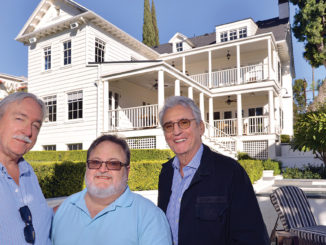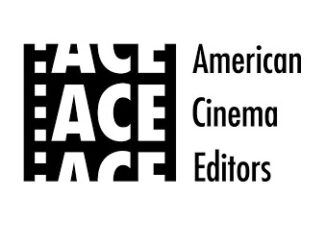
by Ray Zone
The Emergence of Cinematic Time: Modernity, Contingency, the Archive
By Mary Ann Doane
Harvard University Press
288 pages, paperbound
ISBN 0-674-00784-0
Recent films such as Memento, Irreversible and The Rules of Attraction reveal a concern for the cinematic passage of time and its impact upon narrative as a kind of inverted temporal Mobius Strip. With Mary Ann Doane’s highly theoretical meditation, the reader is challenged to reflect on the representation of time in film as a cultural extension of the 20th Century. Doane is one of the principal film theorists in academia today and her work is a cross-disciplinary argument about motion picture temporality set within discussions of thermodynamics, physiology, statistics and psychoanalysis.
In 1884, standardization of time took place with an international conference in Washington, DC that divided the world into 24 time zones with Greenwich established as zero meridian. With the arrival of motion picture technology, film came to be seen as an archive of time itself. Doane opens her book with a discussion of a piece of fiction called “The Kinetoscope of Time” that appeared in the December 1895 issue of Scribner’s Magazine in which the protagonist views filmed records of other times and places. “The story conveys something of the uncanniness of the new technology’s apparent ability to transcend time as corruption by paradoxically fixing life and movement,” writes Doane. It “conjoins many of the motifs associated with the emerging cinema and its technological promise to capture time.”
The “rationalization” of time was further promulgated by the sale of millions of pocket watches and the first regulating time signal transmitted around the world from the Eiffel Tower in 1913. The notion of moderness itself was distinguished by an increasingly nervous state of mind engendered by technological “shocks” of innovation. “Modernity was characterized by the impulse to wear time, to append it to the body,” suggests Doane. “The acceleration of events specific to city life was inseparable from the effects of new technology.”
The cut itself separates two meaningful instances of present time that are each filled with the chaos of contingency.
This acceleration produced a tendency within modernity for “contingency” which Doane defines as “the escape from the grasp of rationalization and its system.” Contingency is the domain of the accidental and the ephemeral, an analogue for the amorphous timelessness of the subconscious mind swirling at large beneath the rigorously linear temporality of the conscious mind. This duality is at the crux of Doane’s work.
“It is the argument of this book,” she writes, “that the rationalization of time characterizing industrialization and the expansion of capitalism was accompanied by a structuring of contingency and temporality through emerging technologies of representation—a structuring that attempted to ensure their residence outside structure, to make tolerable an incessant rationalization.” The motion picture in the early years of the 20th century was thus both an instrument to perfect the rationalization of time and, contrarily, the most prodigious tool for artistic revolt against it.
And it was through the device of the edit that this rebellion against standardized temporality was achieved. “The frame, of course, constitutes a spatial limit, but it is intriguing to note that histories and theories of early cinema continually pinpoint the temporal limit of the cut, the interruption in the linear forward movement of the film strip, as the crucial moment in the elaboration of film language.”
Deceptively, film maintains an illusion of continuous time. “In this way, it borrows and activates the shot’s privileged relation to contingency and a temporality emancipated from rationalization.”
Doane cites an essay by Pier Pasolini titled “Observations on the Long Take,” in which Pasolini states that montage––or the edit––makes a continuous shot shift from a temporality of the present to that of the past. The cut itself separates two meaningful instances of present time that are each filled with the chaos of contingency. For Pasolini, the cut itself is equivalent to death in converting the “present, which is infinite, unstable and uncertain” to montage, which constitutes a “linguistically describable past.”
The motion picture in the early years of the 20th century was thus both an instrument to perfect the rationalization of time and, contrarily, the most prodigious tool for artistic revolt against it.
Editing is a rearticulation of the forward movement of the film strip, the “inscription within the film of ‘temporal difference.’” Doane reaffirms the historical importance of the cut as the primary artistic tool by which cinema developed into an art form. “It remains clear that editing—as the possibility of departure from temporal and spatial continuity—is consistently perceived as the sine qua non of cinematic signification.”
Parallel editing, used to great effect in the films of D.W. Griffith, is generally acknowledged by film historians to mark “the attainment of a fully and specifically cinematic discourse.” To the extent that parallel editing conjoins two separate but coincident spaces of contingency, it “successfully eroticizes time,” writes Doane, and “injects it with desire, expectation [and] anticipation, and displaces the spectatorial time of viewing by contributing to the construction of a ‘lived,’ imaginary temporality.”
Film narrative has always depended upon the depiction of subjective temporal aberrations and memories which are embodied in flashbacks, flashforwards and radical ellipses. “Each of these, however,” writes Doane, “depends upon the cut, which allows the disarticulation of filmic time and profilmic time.”
Challenging reconsiderations of the motion picture medium such as this one enable the reader, viewer and editor to confront anew the many dimensions of an art form that is continually reshaping time itself. Why is this relevant? Doane asks the same question:
“How does the subject inhabit this new space and time? What are the pressures of contingency, and the pleasures of its representability? The ideologies of instantaneity, of temporal compression, of the lure of the present moment that emerge in this period have not disappeared; they confront us now in the form of digital technologies.”





